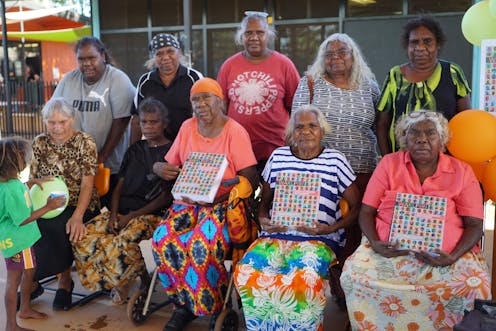how a groundbreaking First Nations dictionary was made
- Written by Carmel OShannessy, Associate Professor of linguistics, Australian National University

Aboriginal and Torres Strait Islander readers are advised this article contains names of deceased people. The symbol † next to a personal name is a conventional respectful indicator that the person has died.
The first large dictionary[1] of the Warlpiri language began in 1959 in Alice Springs, when Yuendumu man †Kenny Wayne Jungarrayi and others started teaching their language to a young American linguist, †Ken Hale[2].
Sixty years in the making, the Warlpiri Dictionary has been shortlisted[3] for the 2023 Australian Book Industry Awards – a rarity for a dictionary.
Spoken in and around the Tanami Desert, Warlpiri is an Australian Aboriginal language used by around 3,000 adults and children as their everyday language.
Warlpiri artist Otto Sims Jungarrayi says:
In the old days when kardiya [non-Indigenous] people came, when they reached this continent, we had jukurrpa “law” here, not written on paper but true jukurrpa “law”, that the ancestors gave us. Now we put our language and our jukurrpa law on paper.
The dictionary and these materials represent the authority of elders, even if those elders are no longer present.
From the start of this project, Hale tape-recorded and transcribed many hours of Warlpiri people talking about language, country, kin and diverse aspects of traditional life.
The Warlpiri people he recorded came from different parts of Warlpiri country, speaking their own distinctive varieties of the language. From this material, Hale hand-wrote the words and meanings on small slips of paper that could be sorted in different ways.
Read more: Friday essay: my belly is angry, my throat is in love — how body parts express emotions in Indigenous languages[4]
Making a dictionary
Bilingual education was introduced in Northern Territory schools in the 1970s. It meant the Warlpiri communities needed a common spelling system.
In the early 1970s, at Lajamanu community, Warlpiri men †Maurice Luther Jupurrurla[5] and †Marlurrku Paddy Patrick Jangala worked with linguist †Lothar Jagst to develop that spelling system. It was adopted in the new bilingual schools.

















